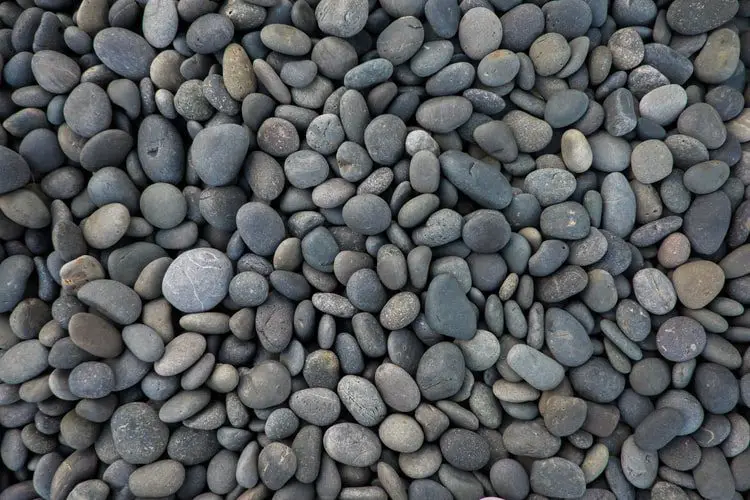By incorporating small river rock into your landscape, you will be able to add the beautiful colors and textures of this natural stone without breaking the bank. Many people find the versatility and durability of river rock to be a great benefit to their landscape.
Small river rock can be a great solution to many of your landscape problems. From aolving erosion problems to just accenting a plants, river rock can do it all.
We will detail the many uses, types, advantages and disadvantages of using small river rock in your landscape project.
Table of Contents
What is River Rock?
My experiences have taught me that you can’t just start talking about river rock and assume everyone knows what you are talking about. Many of the people I have spoken with have very different ideas of what river rock looks like.
In general, when most people refer to river rock in my area of Wisconsin, they are referring to Mississippi stone. I presume that this type of river rock had originally come from the Mississippi river, but I am not even sure about that.
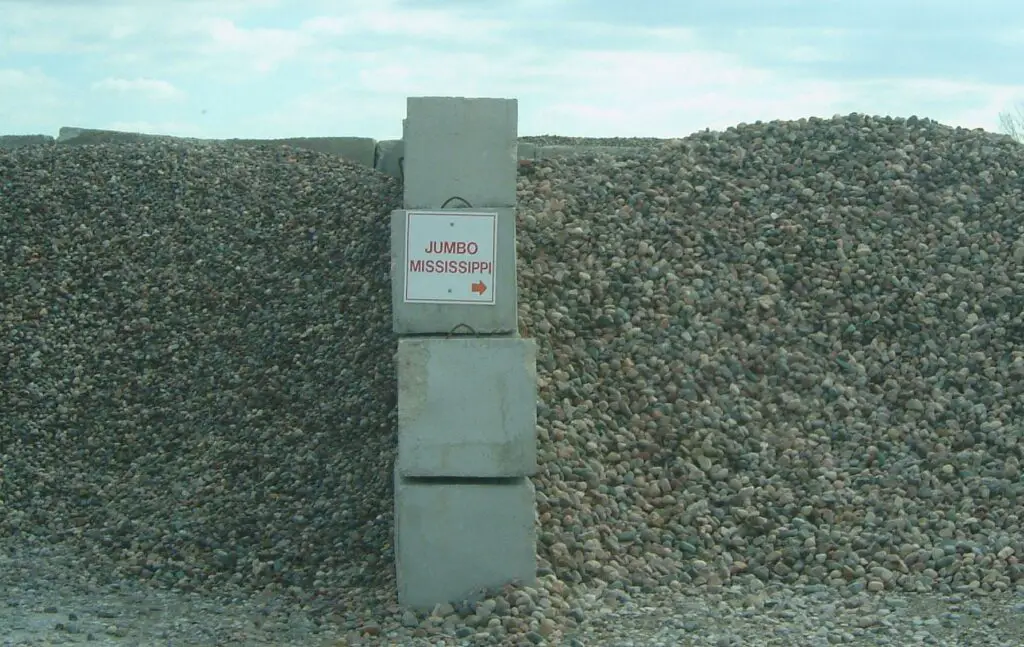
I firmly believe that if you are going to call it river rock, it needs to be smooth as a rock would be if it spent many years being washed down a river. If there is one thing for certain, water is a very powerful force and will erode all of the sharp edges off of stone given time. People referring to jagged, sharp rock as river rock, no matter what color it is, are simply wrong.
I would guess that most of these different varieties of what people refer to as river rocks actually come from a rock quarry or gravel pit. I would also assume that most of this rock and gravel that we are digging out of the earth, at one time, was deposited there by a river or maybe a glacier.
Smooth rocks like this can be found in many places, including stream beds, beaches, riverbeds, and even fields and fencerows. They usually have a diameter of 1 to 2 inches; however, this might vary. Although these rocks can be found in many readily accessible places, it is usually not legal to harvest large quantities of stone from public places, so i would recommend buying the stone that you need
Small river rock is going to be different colors depending on where it is found, but most of it will be earth tones for obvious reasons. Most river rock is clean and does not contain fines.
Differences in Rock Types and Names
I’m sure that there are many different types and colors of river rock, but just to clarify a bit, here are some examples of rocks that I have heard referred to as river rock.
Mississippi – This is the classic that most people are thinking about when they use the term river rock. The pile below seems to have more whites in it than I would expect.
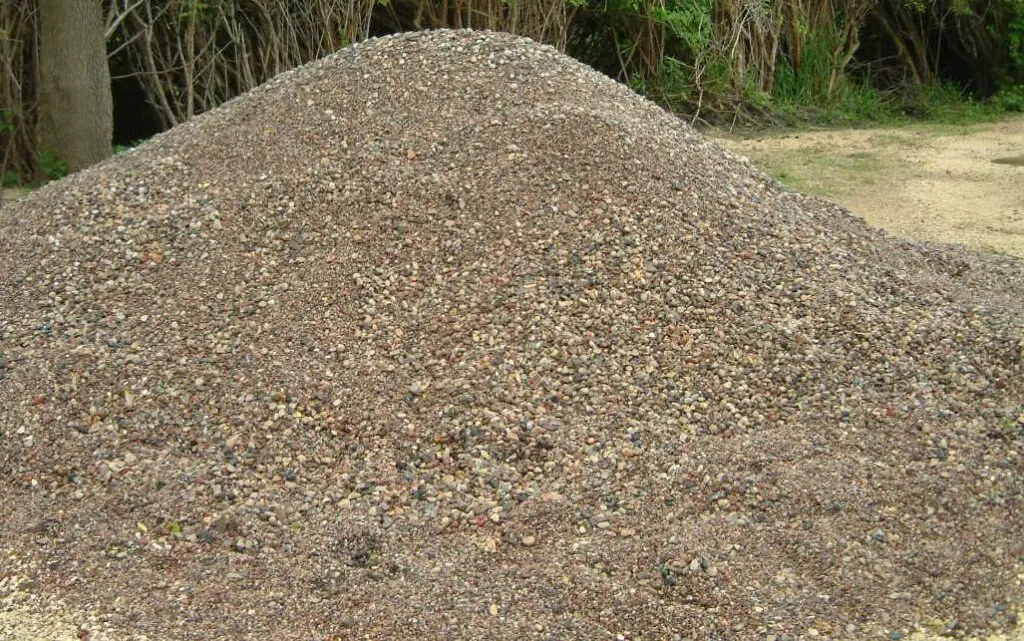
American Heritage – This rock is sized and shaped like river rock, but it contains more white shades of rock, so it is less expensive than the Mississippi stone.
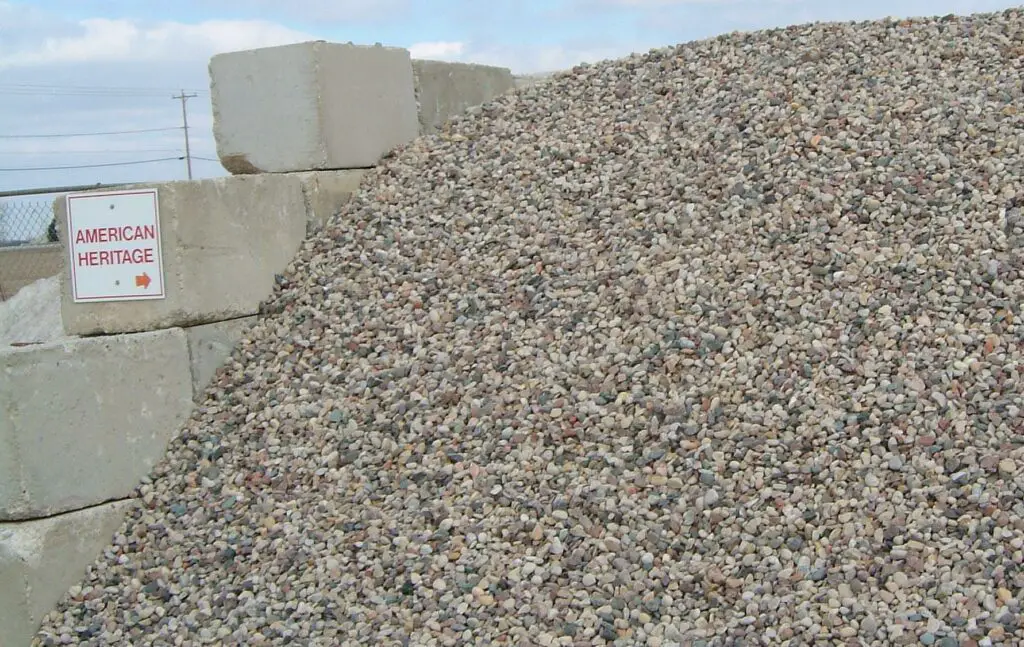
River Stone – This is a very generic term used to describe some smooth rock that is not really what I would call Mississippi, but it is close. If they could call it Mississippi they would, because they could charge more.
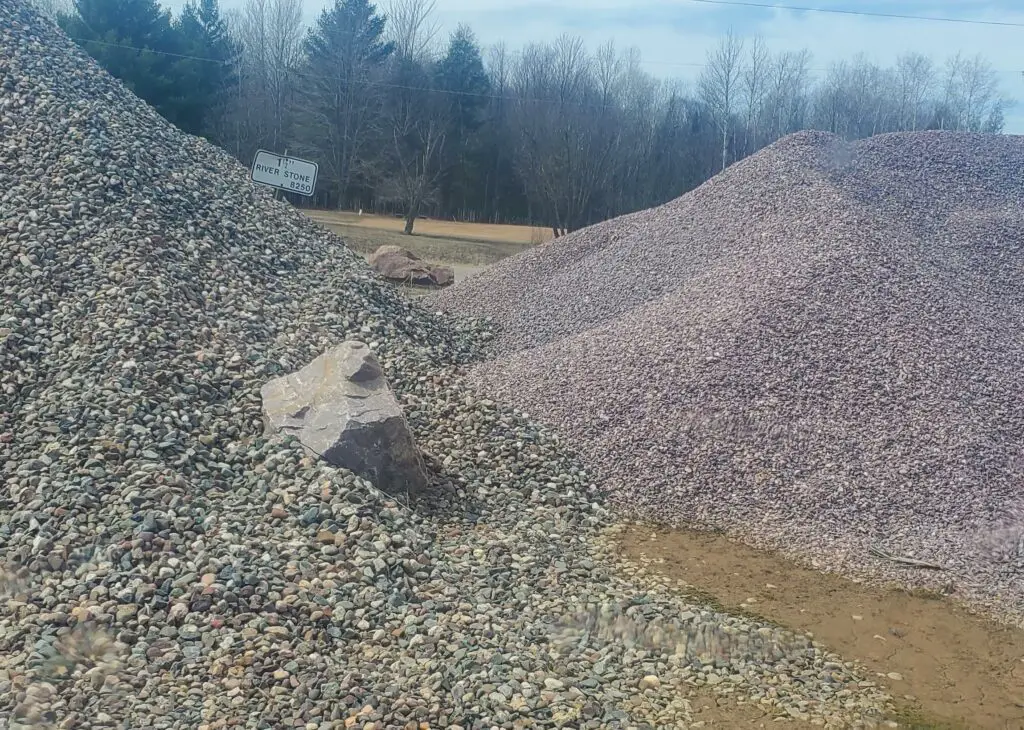
Eau Claire Aggregate – This is clearly not river rock, but it still gets called river rock by some.
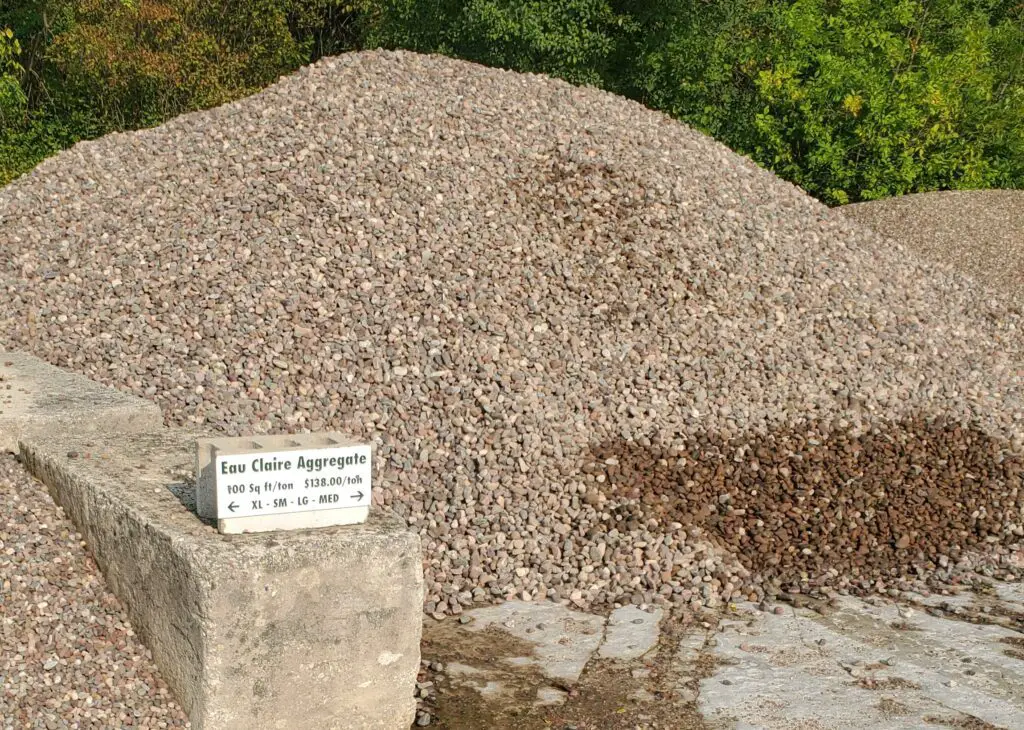
Round Rapids Stone – Once again, this is a generic name for a smooth somewhat colorful stone that is not Mississippi.
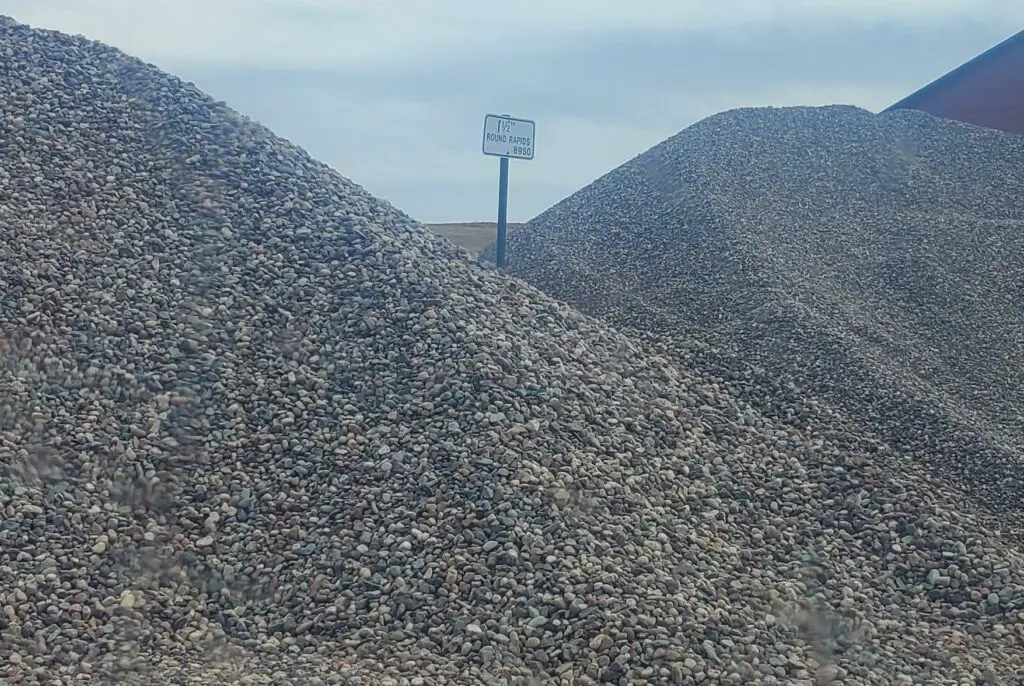
Meramec Stone – I have this referred to as river rock even though it clearly is not. This stone is much more orange and uniform in color.
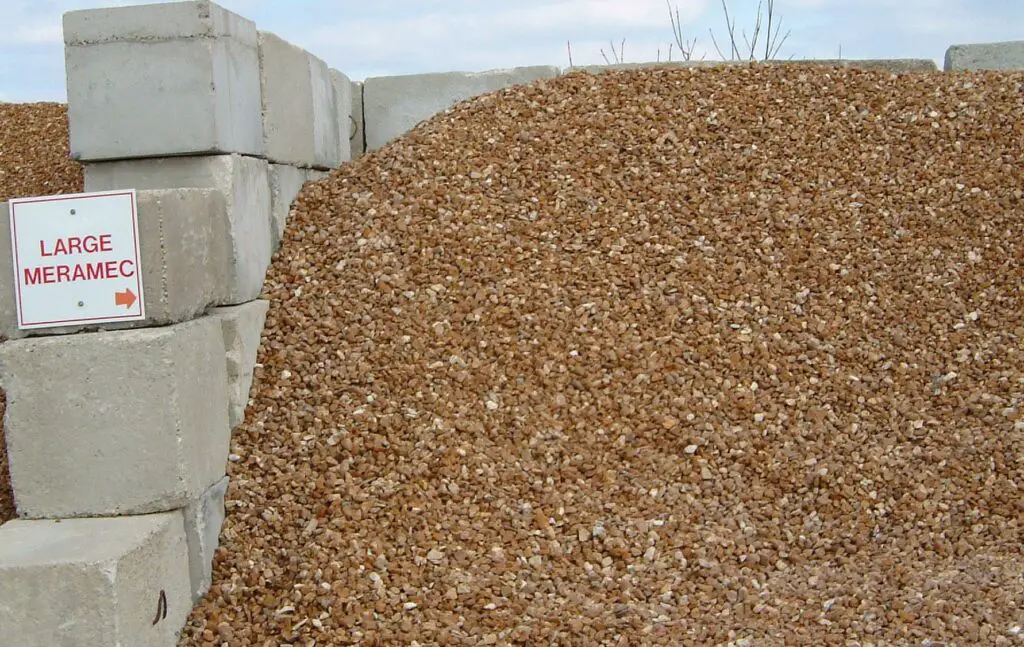
River Jacks and Cobbles – When you start to get out of the smaller sizes, people will often refer to these stones as both river jacks and or cobbles, although river jacks are usually more of a mix of sizes than the others.
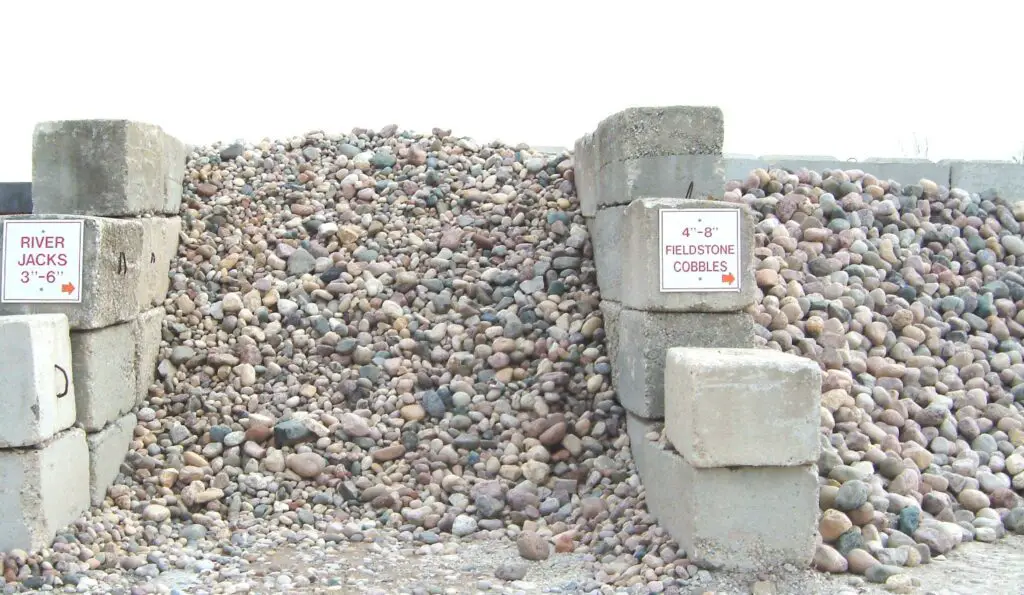
Fieldstone, Boulders, Cobbles – Once you get above the six inch size or so, people will typically start referring to these rocks as fieldstones, cobbles, cobblestone or boulders. But, I have heard people call these stones river rock also.
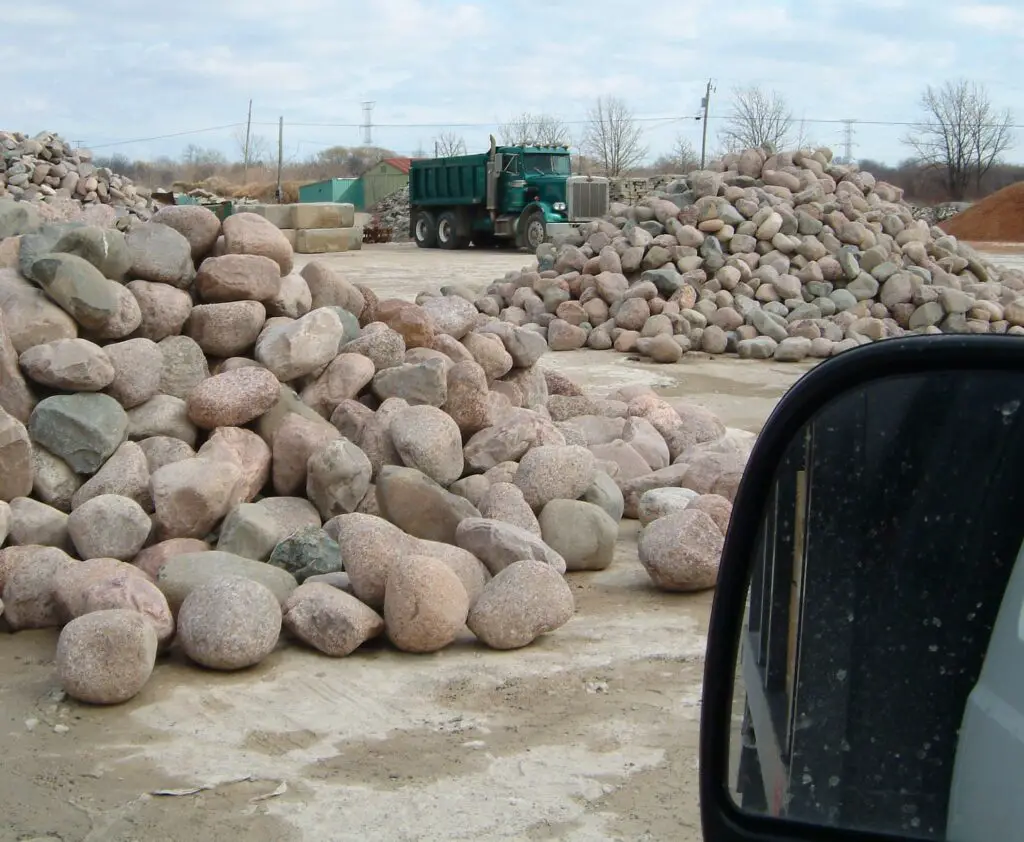
Uses of Landscaping River Rock
With the multitude of colors and textures available, using rocks in your landscape may truly add another dimension and character to your scene. River rocks can be used to create or improve both land and water features.
River Rock in a Water Features
Water features and river rock go together like peanut butter and jelly; you can hardly think of one without thinking of the other. It is quite a natural look to have the smooth and colorful river rock in your pond, stream, and waterfall.
As mentioned above, these rocks were worn smooth by moving water or ice, so they fit quite naturally in a pond. The fact that they are smooth not only makes them look like the rock that you might see on the bottom of your local river, but it also means that they don’t have sharp corners and edges to cut through your pond liner.
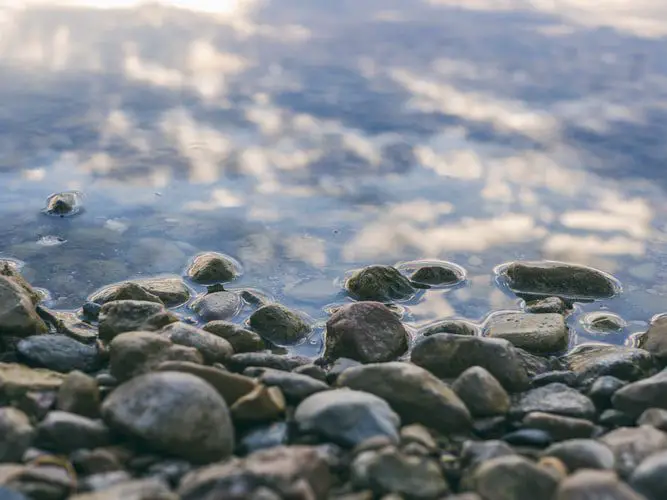
You might think that the sharpness of the rocks doesn’t matter in ponds, but I will tell you from experience that the majority of holes that I have created in pond liners have been from a sharp rock or sharp part of a rock being twisted or pushed into the liner with force. This typically happens when we have some river rock or boulders on the pond liner, and then we place a huge boulder, and while rolling and twisting it to get it set, we create a hole. So, sharp rocks do matter.
Whether you are building a Koi pond, Goldfish pond, or any other sort of pond or water feature for that matter, using natural river rock in the pond and the surrounding landscape will surely help it blend in and look more natural.
River Rocks used to Prevent Erosion
Over the years, we have often installed river rock of various sizes to channel, control, and move water. Once again, river rock makes it blend into the surrounding landscape.
River rock can be used:
- To create overflow structures for larger retention style ponds
- To create dry or wet riverbeds through yards to direct stormwater where you would like it to go rather than just letting it flood your yard.
- To line ditches and flow ways and protect them from erosion.
- To fill in that spot in your yard that always seems to be too wet for the lawnmower.
- To protect the edges of a natural stream, pond, or lake from water movement.
- To protect your beds when placed under your downspouts.

When directing and controlling storm runoff water, it is always good to use larger-sized rock that won’t be easily moved by water flow. It is also a good idea to install a landscape fabric or synthetic liner of some sort under the rock to be sure that the water doesn’t erode the soil out from under the rocks.
River Rock used as a Bed Cover
The most conventional bed covering materials are wood chips, bark mulch, pine straw, cocoa bean hulls, and other organic materials. There has also been a trend to use ground up, recycled, and colorized rubber to cover landscape beds and playgrounds.
The advantage of using organic products on your landscape beds is that the organic matter will decompose over time and provide nutrition for your plants. This advantage is also the downside. If you use organic mulches, you will invariably find yourself adding more every couple of years because it simply deteriorates over time and needs replacing.
The advantage of using recycled rubber products as mulch is that they don’t decompose like the organics, but the disadvantage is that wind and water can easily displace the rubber mulch. Remember, rubber floats.
This is where using small river rock to cover your landscape beds comes in. River rock will not decompose and never needs replacing, and it does not float or move with the wind. But instead, it actually prevents water and wind erosion.
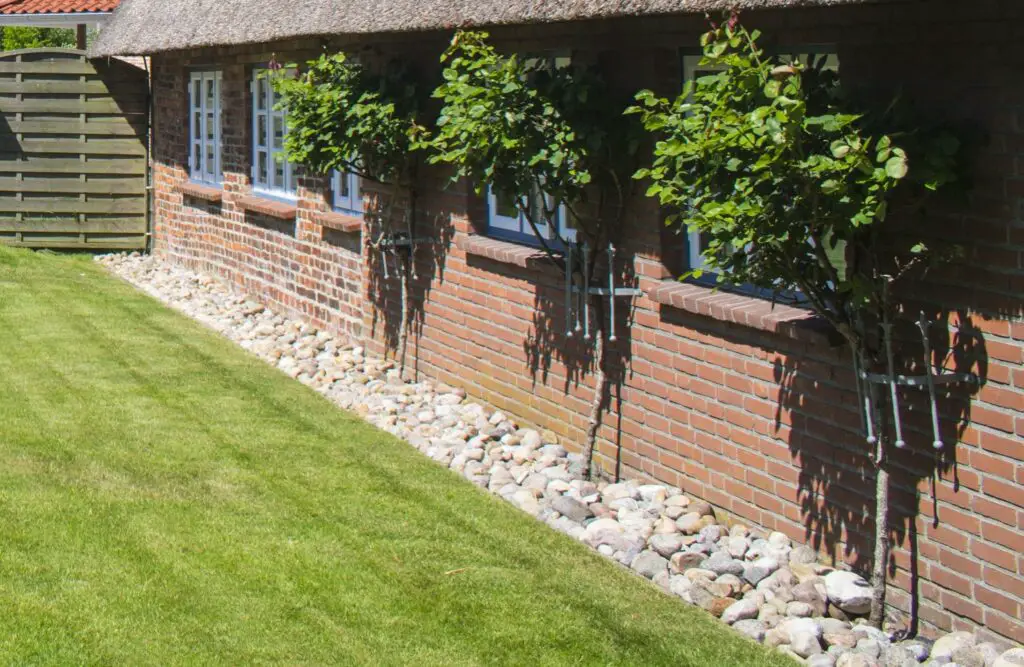
When using small river rock to cover landscape beds, I would always recommend placing the rock on top of landscape fabric so that weeds won’t grow through. The last thing you want is to have a bed full of weeds coming up between your river rock. The rock will make it harder than ever to pull weeds.
This leads us to the two disadvantages of using river rock on your landscape beds. If you don’t do any upkeep to your yard and allow dirt and weeds to get into your river rock beds on top of the landscape fabric, and these weeds grow large and thick, it is almost impossible to fix the problem.
The few times that I have seen this, it has been in a neglected yard, and the easiest solution was to remove and dispose of all of the overgrown river rock and simply replace the rock and landscape fabric.
This, as you can probably imagine, is not an easy task. Installing river rock is hard enough since it is heavy, and taking it back out after many years along with the fabric below can be a truly miserable task.
River rock weighs about 2500lbs per square yard, so it is not light. If you plan to use it for your landscape, make sure that you plan it out so that you never need to remove it. Also, although the combination of river rock over landscape fabric is an excellent deterrent to any weed growth, there will be weeds that grow on top of the fabric over time, so it is important that you stay after these and pull them when they do arrive.
Another disadvantage of using river rock in your landscape is that you probably don’t want to use it in your perennial or annual flower beds. River rock will make it very difficult for flowers to grow and spread as they will tend to do. It will also make it very difficult to work the soil if you want to make changes in the future. Also, the river rock will absorb the heat from the sun, so it may not be the best for all plants. I would recommend organic mulches for annual or perennial flower beds.
River rock is great below shrubs and trees and in any spot where you want to absolutely minimize the required maintenance.
River Rock as a Path
For years, small river rock has been used as a decent surface for casual garden paths. As with any materials, river rock has its plusses and minuses for use on a pathway. Once again, it is great because it never decays, and set on top of landscape fabric, it will last and be weed-free for many years to come.
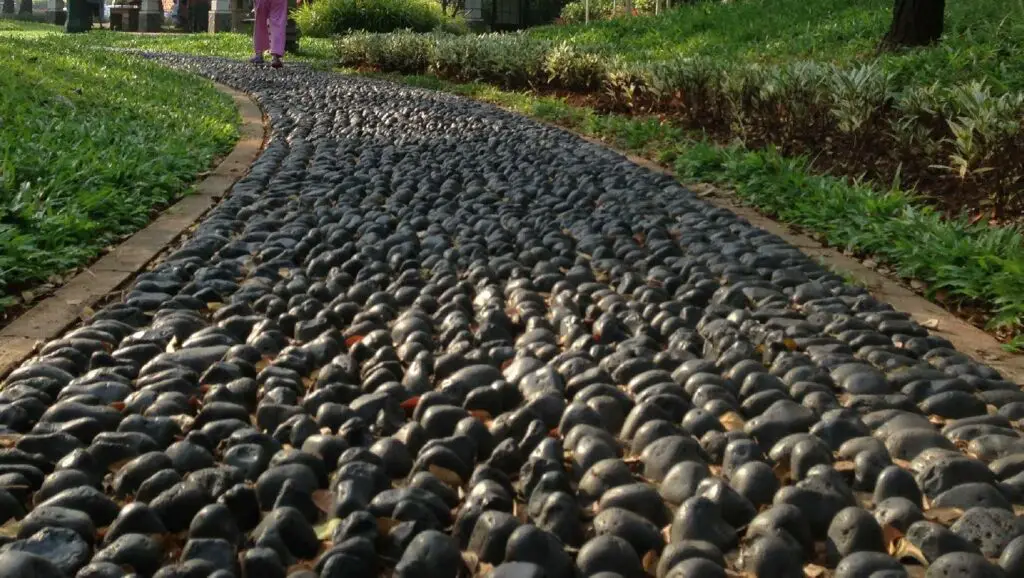
The downside to using river rock on your path is that they are small, smooth rocks with no fines to tie them together. This means that the rocks will not really stabilize over time unless dirt gets in between the individual pebbles. Obviously, small river rock will be easier to walk on than larger river rock, but it will also move more with every step. This may not be a problem for slow strolls through the garden with comfortable shoes, but heals will be a problem, and running children will spread these small stones all over the place.
River Rock used at the Fire
Whether you have an in-ground fire pit or a freestanding fire pit, you will want to be sure that the surrounding area is protected and definitely not flammable. Large rive rocks have been used for many years to border campfires, and small river rocks can be a tremendous fire-proof surround for any type of fire pit.
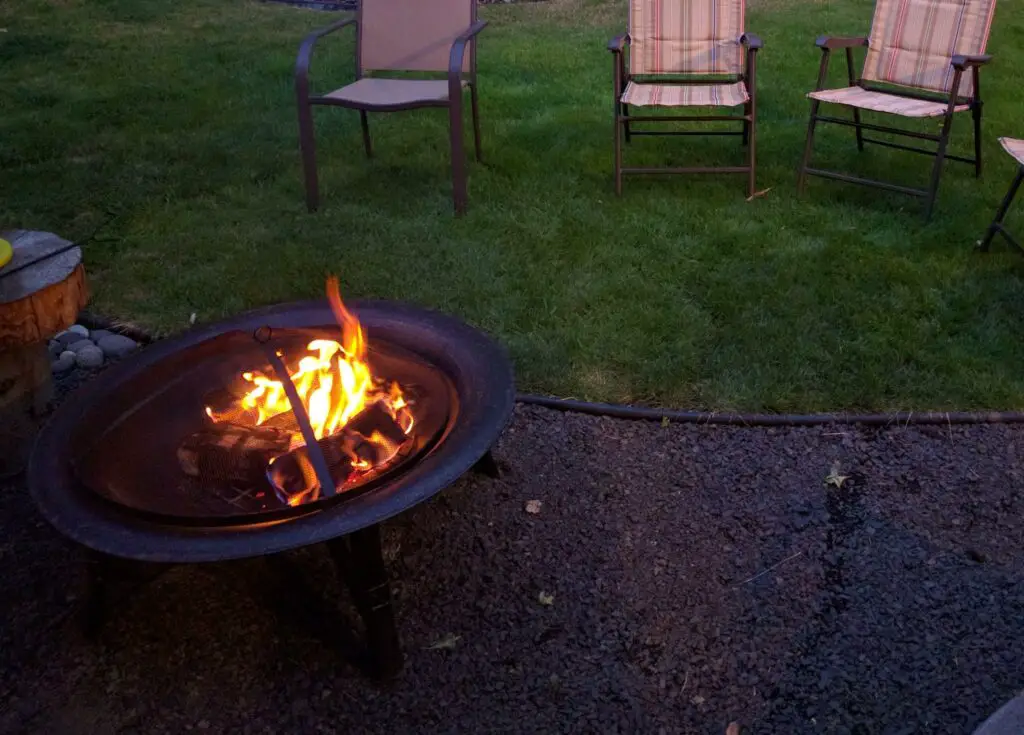
River Rock for Play Areas?
Once again, the advantages of river rock are its weight and longevity. Using it for a play area will undoubtedly make for a long-lasting play area, but will this be because the stone is so durable or because it just isn’t that much fun to play in? If you are going to try river rock for a play area, I would again plan to put down landscape fabric first, and I would recommend making the stone six to ten inches thick to avoid bare spots over time as kids will move the small rocks. I would also recommend using the smallest river rock you can find; the smaller it is, the more comfortable it will be to play on.
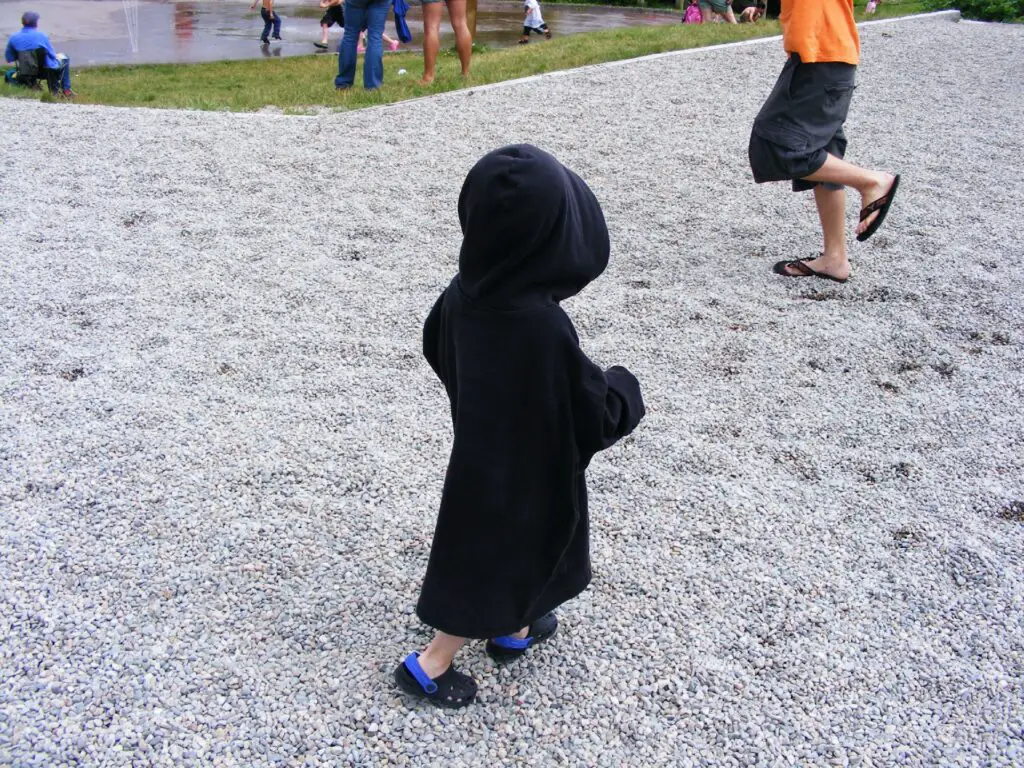
Before having river rock delivered to your house to create a play area, take the kids to your local rock yard and have them play in the river rock pile to see if they will even like it. You might decide that sand is a better material to play on that won’t decompose.
Also, keep in mind that neighbor kids who haven’t been taught not to throw stones might be a big problem if they are playing on a big mat of river rock. Plenty of ammunition there.
River Rock for a Mosaic
Did you know that you can also make a mosaic? Design a one-of-a-kind walking route in your front yard by creating a river rock mosaic placed in concrete. This type of application takes more than a bit of skill and creativity, but it can be very rewarding when finished.
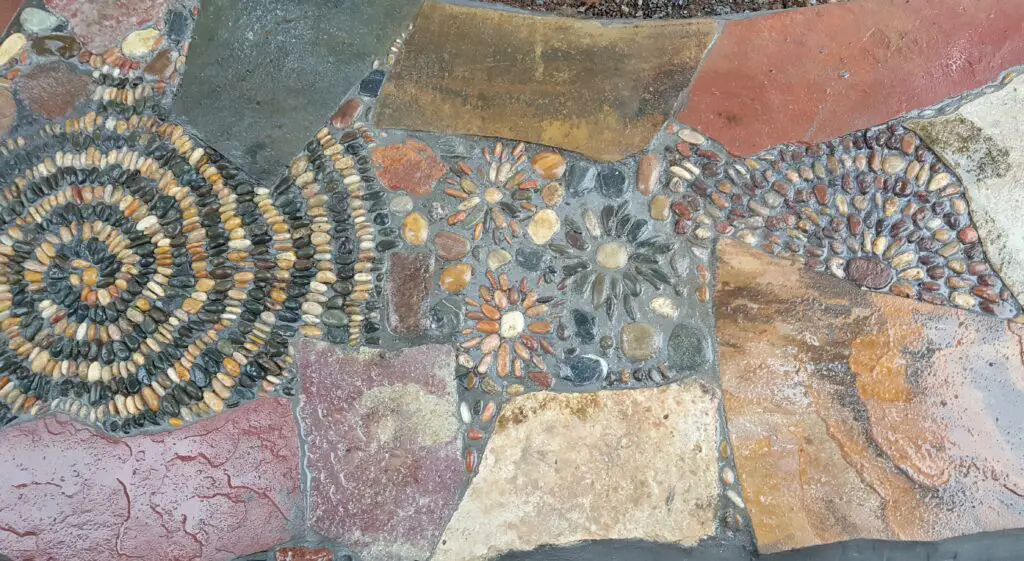
River Rock used for Edging
Here is where the definition for river rock becomes a bit hazy. Most folks in my area would refer to rock large enough to be used as edging as fieldstone or cobbles. But, in some areas, these mid-sized rocks might be referred to as river rocks, so I have included them here to be used as an edging stone. They can certainly be smooth and made of the same material, but most won’t call them river rock.
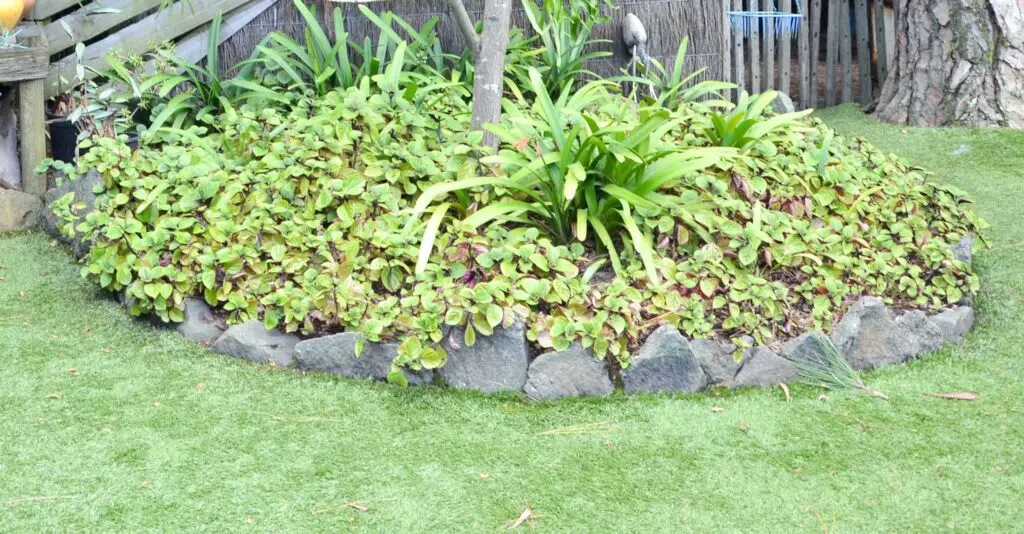
River Rock as an Accent
Whether you call them boulders, rocks, stones or river rock, you can definitely use them to help add interest to your garden as an accent.
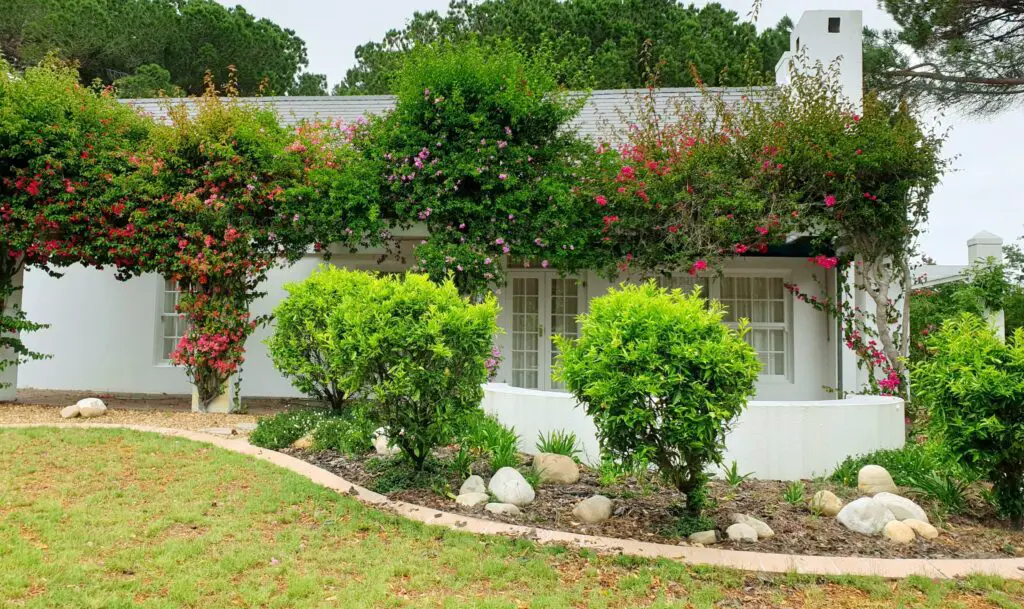
Landscape River Rock Sizes
River rocks for landscaping are available to buy in bulk, by the truckload, or in bags at garden centers or rock yards. They are usually offered in a variety of sizes.
The scale of your project will largely determine the size of stone that you use for your project. A smaller stone is more suitable for a smaller application, while a larger stone will often look better in large spaces.
Below are some of the most common river rock sizes.
- 3/8-inch river rock – The smallest river rocks sold in stores are 3/8″ river rocks. These tiny, smooth stones are most commonly seen in and near playgrounds, walkways, or pond bottoms. These would typically not be suitable to use in a stream, as the water will readily push these tiny pebbles downstream.
- 3/4-inch river rock – Because of their size and smooth finish, these stones are also widely used in trails and pathways as well as pond and stream bottoms. The different colors of the rocks will add depth to your landscape and property’s overall appearance.
- 1-inch river rock – This size of river rock is often used to cover planting beds, waterfalls, and streams as it tends to show its shape and color from a distance and will tend to stay in place due to its weight.
- 1-3-inch river rock – These are sometimes referred to as river jacks for some reason, but this will vary within different regions. River rocks become increasingly adaptable as they grow in size, and 1-3 inch stones are ideal for accenting a focal point water feature for your landscape. These rocks may be used to develop or improve river beds, waterfalls, ponds, and other elements of your landscape. This river rock can also be used as a bed covering in larger areas. Sizes such as this should not be used in areas that get foot traffic as they are prone to causing ankle sprains due to their size.
- 3-5-inch river rock – This is the size where river rocks often start to be called cobbles, fieldstone, or boulders. These are great for borders, pond edges, drainage ways, ditches, and landscape plantings accents.
- 6 inch and up – Here is where the river rock name usually goes away, although I have certainly heard smooth roundish rocks of all sizes referred to as river rock, sizes this large are most often called cobbles, boulders, or fieldstone. Larger sizes such as these are often used as accents, edging, rock walls, and bordering ponds, waterfalls, and streams.
Some more River Rock Related Jargon
- Pea Gravel – The term pea gravel is often used to refer to any pebble in the ¼” or smaller range that is smooth, is not crushed, and does not contain any fines. This is typically not river rock but can be very similar.
- Chipped Rock, Crushed Stone, Gravel – This stone can be of many varieties but is typically not river rock. This stone can be bought in all sizes and is generally manufactured by crushing larger rocks using large crushing machines. Crushed stone will often contain the fine particles (fines) created when the stone is crushed. These are often used in pathways and driveways due to the angular chips and fines tending to compact and tie together better than the round, smooth river rock.
Conclusion
River rock, or whatever they call it in your region of the world, is durable, attractive, and very versatile. It can be used to help naturalize and beautify your yard in many ways.
It is very heavy to lift but relatively easy to work with other than its weight. If you are planning to do a bunch of river rock work around your home and landscape, I would recommend using the following tools:
- Flat Shovel
- Steel Rake
- Push Broom (for cleanup)
- Wheelbarrow
- Landscape Fabric
- Staples (for the landscape fabric)
- Utility Knife (to cut fabric)
- Heavy Hammer
FAQs
Which is cheaper: buying rocks in bulk or buying bags? – Buying rock in bulk is always cheaper than buying bags. Bagged rock is sold for its convenience of use.
How much are rocks and stones? – A ton will set you back $40 to $800, depending on the material you select. Size, color, form, and finish are all price variables. Furthermore, you will spend less per unit as the quantity increases, which means you’re better off making one big purchase. Trucking heavy rock is not cheap, so if the rock truck is driving to your house, you may as well order as much as you will need to finish your project.

